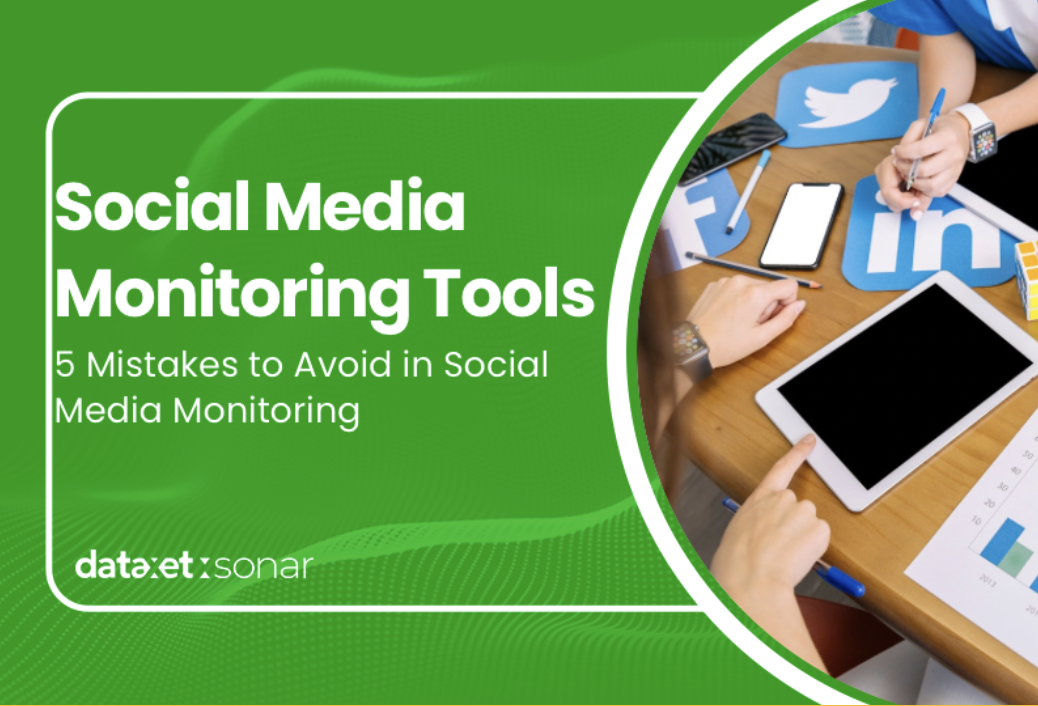n today’s digital marketing landscape, social media monitoring is one of the most important aspects to ensure the success of marketing strategies and brand management. Social media is not only a platform for interacting with customers, but also a place for companies to gather valuable insights regarding their products, market trends, and public sentiment toward the brand. When used effectively, social media monitoring helps companies better understand their audience, increase engagement, and improve brand image.
However, many companies still make mistakes in managing their social media monitoring. These mistakes not only waste time and resources but also hinder the achievement of business goals. In this article, we will discuss five major mistakes commonly made in social media monitoring and how to avoid them to make your marketing strategy more effective and efficient.
1. Not Setting Clear Objectives
The first major mistake in social media monitoring is not setting clear objectives. Without clear goals, monitoring becomes meaningless because there is no clear direction on what should be achieved. Many companies get caught up in data volume—such as the number of mentions, likes, or retweets—but don’t know how to connect this data to business goals.
Example Mistake: For instance, you might be tracking how often your brand is mentioned on social media without knowing your specific purpose. Are you trying to increase brand awareness, boost sales, or just monitor customer satisfaction? Without a clear objective, it’s difficult to know whether your strategy is effective.
Solution: Set specific objectives before starting social media monitoring. Some clear goals could include:
- Increasing brand awareness by tracking brand mentions.
- Identifying customer service issues to improve products or services.
- Analyzing public sentiment regarding a new product launch.
- Understanding audience opinions to improve marketing content.
2. Ignoring Sentiment Analysis
The second common mistake is ignoring sentiment analysis. While tracking how often your brand or product is mentioned is important, it is even more important to understand how audiences feel about it. This is where sentiment analysis becomes critical.
Example Mistake: Companies often focus solely on the number of mentions without considering whether they are positive, negative, or neutral. As a result, they emphasize data volume over quality. For example, even if mentions are high, mostly negative sentiment could indicate a serious issue.
Solution: Use social media monitoring tools that include sentiment analysis features. Many tools can differentiate between positive, negative, and neutral sentiment, which is essential in determining audience satisfaction. By analyzing sentiment, companies can:
- Quickly respond to complaints and resolve problems.
- Leverage positive feedback to enhance brand image.
Create strategies to improve customer satisfaction when facing negative sentiment.
3. Not Understanding the Right Audience
Another frequent mistake is failing to understand the right audience. Without a clear understanding of your target audience, social media monitoring can be ineffective. You might collect irrelevant data and waste time and resources monitoring conversations that offer little insight.
Example Mistake: For example, you may be tracking conversations about your product without considering whether the people involved are part of your target market. If the audience is not right, the data won’t reflect your actual potential customers’ perspectives.
Solution: Understand your audience thoroughly. Try segmenting them based on demographics, preferences, and behavior. This helps focus your monitoring on relevant conversations. You can:
- Identify who is most relevant to your brand or product.
- Segment audiences by age, gender, location, or interests.
- Ensure you’re monitoring conversations from engaged or potential customers.
4. Ignoring Follow-Up Actions
A common fourth mistake is ignoring follow-up actions after monitoring. It’s important to remember that monitoring is only the first step. The next step is to take action based on the data collected. Without effective follow-up, the data becomes wasted.
Example Mistake: After monitoring feedback or comments, many companies fail to respond effectively. For example, customer complaints go unanswered or positive feedback isn’t used to build the brand image.
Solution: Always respond promptly and appropriately after conducting social media monitoring. Responses can include:
- Offering solutions or answers to issues raised by the audience.
- Thanking customers for positive feedback.
- Investigating recurring complaints or those needing special attention.
Proper follow-up can boost customer trust and strengthen loyalty to your brand.
5. Focusing Only on Certain Platforms
The fifth common mistake is focusing only on major platforms like Facebook or Twitter. While these platforms are important, many others also hold valuable conversations relevant to your brand. Ignoring them may result in missing key insights.
Example Mistake: Companies that only monitor Facebook or Twitter may miss important discussions happening on platforms like Instagram, TikTok, or LinkedIn—especially if their product is more popular there.
Solution: Use social media monitoring tools that support a variety of platforms. This no important conversation is missed. Consider platforms like:
- Instagram – for visual and product-related discussions.
- LinkedIn – for professional or business-related interactions.
- TikTok – to monitor trends popular with younger audiences.
Monitoring these platforms gives a more complete picture of how your audience engages with your brand.
Conclusion
Social media monitoring is a powerful tool to help companies understand their audience, track public sentiment, and boost engagement. However, to use it effectively, companies must avoid common mistakes such as not setting clear goals, ignoring sentiment analysis, misunderstanding their audience, neglecting follow-up, and limiting monitoring to only a few platforms.
By addressing these issues and implementing a more targeted social media monitoring strategy, companies can improve their marketing success, enhance their brand image, and build stronger connections with their audience.






